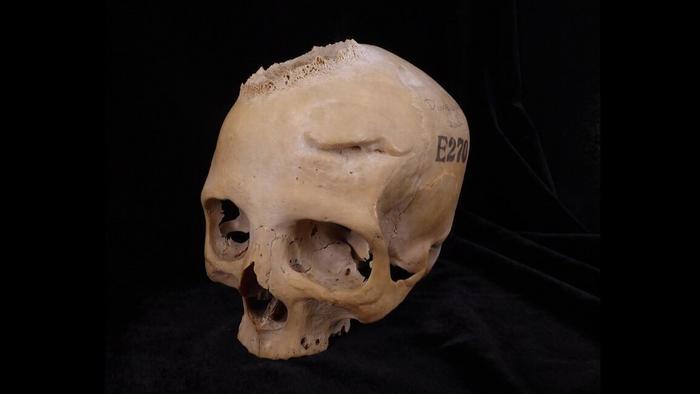After a head injury and complications, Chris Cahill’s skull had to be largely removed. It was replaced by another, identical, polymer.

3D printing is democratizing in medicine, with impressive results. In addition to external prostheses, jaws, ribs, vertebrae and arteries (among others) can now be replaced by their 3D printed clone. This time, it’s a skull that was created to replace that of Chris Cahill, a 35-year-old American, by a team from Rutgers University School of Medicine (United States).
After a severe head trauma, he was in a coma for two months. He was suffering from brain damage to the frontal lobe, and his brain was so swollen that his neurosurgeon, Dr. Gaurav Gupta, decided to “open” his skull to lower the intracranial pressure. With the idea of replacing the missing part once the inflammation has been reduced.
Printed from scanners
But a skull infection prompted Dr. Gupta to seek another solution. He then decided to try 3D printing to replace a large part of the bone shell that had to be removed. He contacted a company specializing in medical equipment, which translated these photos into a 3D model, and designed an exact replica of the skull from the scans the patient had taken.
It was printed with a material called PEEK (polyetheretherketone), a polymer sometimes used in medicine, especially for cervical prostheses. It is particularly strong, resists the attacks of time, and is biocompatible.
Once printed and the patient ready to receive their new skull, the procedure could take place. It went off without a hitch, in just four hours, thanks in part to the precision of the replica and its two-part design, which made it easy to set up.
A bluffing result
And the result, as the photo above shows, is almost perfect. For optimal aesthetics, the incision was made in the scalp, and the patient received an autologous skin transplant. “I was nervous to see what I looked like after the operation,” says Chris Cahill. I was happy to see that I had the exact same head as before, and that I felt good. “
This spectacular operation is not the first of its kind. In 2014, Dutch surgeons had already replaced a skull with a 3D printed implant. The young woman who was operated on was the victim of a disease which causes thickening of the skull, causing compression of the brain. The intervention lasted 23 hours.
.
















